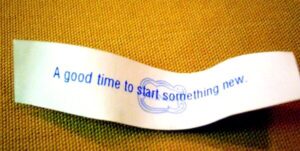
What Every Leader Needs to Know About Retaining Millennials
By 2025, millennials will make up 75 percent of the global workforce. While it’s tough to assign broad characteristics to an entire generation, millennials are

By 2025, millennials will make up 75 percent of the global workforce. While it’s tough to assign broad characteristics to an entire generation, millennials are

Millennials are taking over the workforce. Organizations who wish to compete for millennial talent must first understand the experiences that shape them.
A lot of digital ink has been spilled regarding Millennials and how they are reshaping and reordering the workplace. I’m happy to report that ink has not

How can employers map out a more effective internship program? This infographic offers insights from student employment data…

Next-generation leaders have landed, with technology as a constant companion. What should we expect for the future of business?

If you think the road ahead looks rough for Generation Y careers, you’re right. Just do the math. What will it take to help Millennials succeed?

Think you’re ready to quit your job and strike out on your own as an entrepreneur? There may be a better path to your professional goals…

Finding the next superstar employee can be a challenge. It can start by hiring solid interns, since they often move to full-time positions. But what traits should you look for?

What can today’s graduates expect as they enter the work world? The TalentCulture community talked about this and more during a whirlwind week at #SHRM13…

What can industry conferences teach us about how to overcome generational stereotypes in the workplace? The Recruiting Trends Social Summit reminded me this week that the TalentCulture community mantra is more than mere words. Together we ARE better…

What role does age really play in today’s workplace? One of our very own #TChat Ambassadors takes a tough look, and offers advice for young professionals…

Today’s workplace is no place for age-based stereotyping. And yet, negative stereotypes persist. How can we break free from these assumptions that threaten professional relationships and business performance?

Even today, negative stereotypes can cast a shadow over our professional lives. See what experts from a top recruiting outsourcing firm say about labels in the workforce – this week’s focus on #TChat…
Here’s an interesting people factoid: At least three generations are playing in the workplace sandbox today, with a fourth set to join soon. The Boomers,
Are you a recent grad? Unemployed or Underemployed? Here are ideas for making the most of your summer “break” to prepare for the next step in your career and your life. Make your own day!
Written by Kevin Wang As college students are finally starting to understand the long-term value of internships and actively pursuing them, it has subsequently become
How old are you? (Did I really just ask that question?) But seriously, do age differences in the workplace make a difference in your world – for better or worse?
None of us is getting any younger. But what does that mean for our performance in the workplace – particularly our ability to reach across generations and work together toward common business goals? That’s the subject of this week’s #TChat…
Every generation has its unique view on the world of work. What does Gen Y look for from employers and workplace culture?